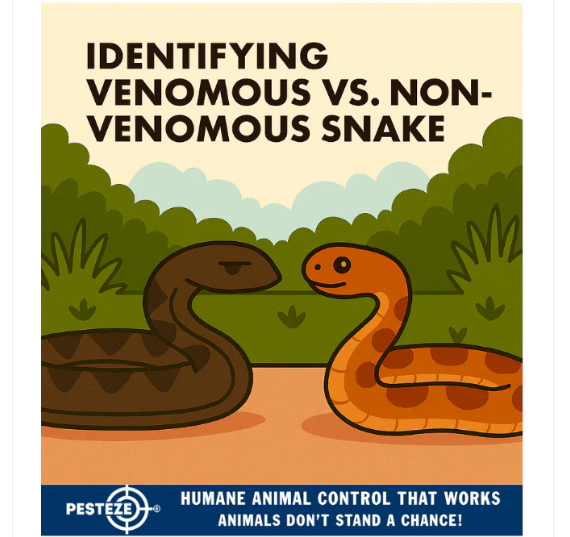IDENTIFYING VENOMOUS VS. NON-VENOMOUS SNAKES

IDENTIFYING VENOMOUS VS. NON-VENOMOUS SNAKES
SUMMARY
Knowing how to distinguish venomous snakes from harmless ones can prevent panic and promote safety. This guide breaks down visual cues, behavior, and regional species to help you identify snakes accurately.
FEATURES
-
Head Shape Clues: Venomous snakes often have triangular heads.
-
Pupil Differences: Slit-like pupils may indicate venomous species.
-
Color Patterns: Learn common markings of dangerous snakes.
-
Behavioral Signs: Defensive postures can signal venomous traits.
-
Regional Snake Guides: Know which species live in your area.
-
Avoid Misidentification: Some harmless snakes mimic venomous ones.
GUIDE DESCRIPTION
Snake identification is a vital skill for outdoor safety. While not all snakes are dangerous, mistaking a harmless one for a venomous species—or vice versa—can lead to unnecessary fear or risky behavior.
One key indicator is head shape. Many venomous snakes, like pit vipers, have broad, triangular heads due to venom glands. In contrast, non-venomous snakes typically have more rounded heads. Pupil shape is another clue: venomous snakes often have vertical, slit-like pupils, while non-venomous ones have round pupils.
Color patterns can be deceptive. For example, coral snakes have red, yellow, and black bands—but so do harmless milk snakes. The rhyme “Red touch yellow, kill a fellow; red touch black, friend of Jack” helps in some regions, but isn’t universally reliable.
Behavior also matters. Venomous snakes may coil, hiss, or rattle when threatened. Non-venomous snakes tend to flee. However, some harmless species mimic these behaviors for protection.
Use regional guides to learn which snakes are native to your area. Apps and local wildlife resources can help you identify species accurately. When in doubt, keep your distance and never attempt to handle a wild snake.
- Amy Chang


Comments 0